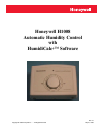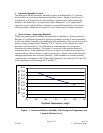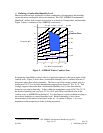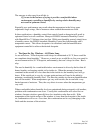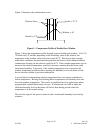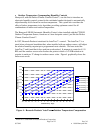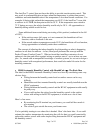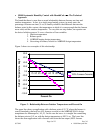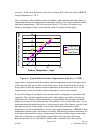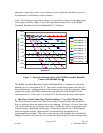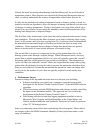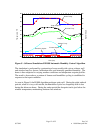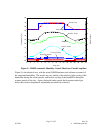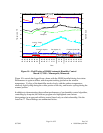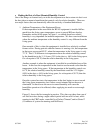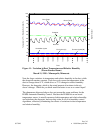
Rev 2.0
63-7048 1998 Honeywell Inc.
Page 4 of 22
The message to take away from all this is:
If you are in the business of trying to provide a comfortable indoor
environment, controlling a humidifier by sensing relative humidity may
not result in optimum control.
Especially poor performance may result when the temperature in the living space
experiences large swings, like in instances where setback thermostats are used.
In these applications, a humidity control that controls based on dewpoint will result in
optimum control over all conditions. Honeywell H1008 Automatic Humidity Control
with HumidiCalc+
Software does just that. While most humidity controls simply have
a humidity sensor, the H1008 Automatic Humidity Control has both humidity and a
temperature sensor. This allows dewpoint to be calculated, and the humidification
equipment controlled to achieve the desired dewpoint.
The Quest for Dry Windows – All Winter Long
As we said above, “If the dewpoint could always be maintained at 50
F, there would be
no complaints about humidity.” However, as much as we would like to live year-round in
an environment with a 50
F dewpoint, unfortunately, that can’t always be done. Here’s
why:
The need to humidify for a comfortable indoor environment is driven by the fact that all
homes breathe, exchanging outside air for inside air. When the amount of moisture
contained in the outside air is less than that in the inside air, the humidity level will go
down. If the outside air is very dry, at some point moisture will need to be added to
maintain a comfortable humidity level. The drier the outside air, the more humidification
that will be needed. When temperatures get very cold outside, the air can hold a very
limited amount of moisture. Thus, the very driest air occurs when the temperatures get
very cold.
When comfortable indoor humidity levels are maintained during extremely cold weather,
problems with condensation can occur. Usually this condensation will occur first on
windows, because windows generally have less insulation value than walls. If the
temperature of the inside surface of the window is lower than the dewpoint of the inside
air, condensation will occur. Over time, this condensation can be very damaging to the
finish and the structure of the window.



